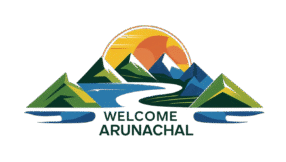Languages & Oral Traditions
Voices of the Land of Dawn-Lit Mountains
Arunachal Pradesh is a treasure of linguistic and cultural diversity. With over 50 languages and countless dialects, communication here is more than words—it is a reflection of identity, history, and tradition.
Explore LanguagesHighlights of Arunachal’s Linguistic & Oral Heritage
- • Over 50 tribal languages and numerous dialects.
- • Belonging mainly to the Tibeto-Burman and Mon-Khmer families.
- • Oral storytelling preserves myths, legends, and genealogies.
- • Folklore expressed through songs, chants, and community gatherings.
- • Languages and traditions deeply tied to rituals, festivals, and daily life.
A Mosaic of Languages
Arunachal Pradesh does not have one unifying language—its strength lies in diversity. Major linguistic groups include Tibeto-Burman languages (spoken by tribes like Adi, Galo, Nyishi, and Apatani), as well as Tai languages (spoken by the Tai Khamti). Some tribes, such as the Wancho and Nocte, speak languages with affinities to the Mon-Khmer family.
While Assamese, Hindi, and English serve as link languages for administration and communication, the tribal tongues remain vital for cultural identity and community life.


Oral Traditions – The Living History
In a land where written records were limited for centuries, oral traditions have served as the primary mode of cultural preservation. Myths about origins, heroic tales, and nature’s spirits are passed down through stories, chants, and epics. Festivals often feature ritual storytelling, accompanied by music, dance, and symbolic performances.
For example, the Adis celebrate agricultural myths during Solung, while the Mishmis narrate legends tied to epic characters. These traditions ensure that ancestral wisdom remains alive even in a changing world.
Songs, Chants & Ritual Performances
Music and oral performance are inseparable from tribal life. Songs mark agricultural cycles, weddings, hunting, and spiritual rituals. Priest-like figures such as the Idu Mishmi shamans or the Nyishi priests act as custodians of myths, chanting ancient verses during community gatherings.
Log drums, flutes, and traditional instruments often accompany these recitations, creating an atmosphere where the past meets the present.

Language Preservation in Modern Times
Modern influences, migration, and education pose challenges to indigenous languages. However, active efforts are being made to document, preserve, and promote them. Researchers, local leaders, and communities work together to record oral traditions, publish dictionaries, and integrate folk tales into cultural programs.
Festivals and tourism initiatives also highlight storytelling sessions and performances, offering visitors a chance to witness the richness of Arunachal’s living heritage.
FAQs on Languages & Oral Traditions
1. How many languages are spoken in Arunachal Pradesh?
There are over 50 tribal languages and numerous dialects, mainly from Tibeto-Burman and Tai families.
2. Are these languages written or oral?
Most tribal languages are traditionally oral, with storytelling, chants, and songs being the main forms of preservation.
3. Which languages are commonly used for communication?
Assamese, Hindi, and English serve as link languages, though each tribe continues to use its mother tongue.
4. Why are oral traditions important?
They preserve history, mythology, and cultural identity, ensuring continuity across generations.
5. Are efforts being made to preserve these languages?
Yes, through documentation projects, cultural festivals, and integration into education and tourism.
Experience Living Traditions
Arunachal Pradesh’s languages and oral traditions are living archives of wisdom, myths, and community values.
Plan Your Visit